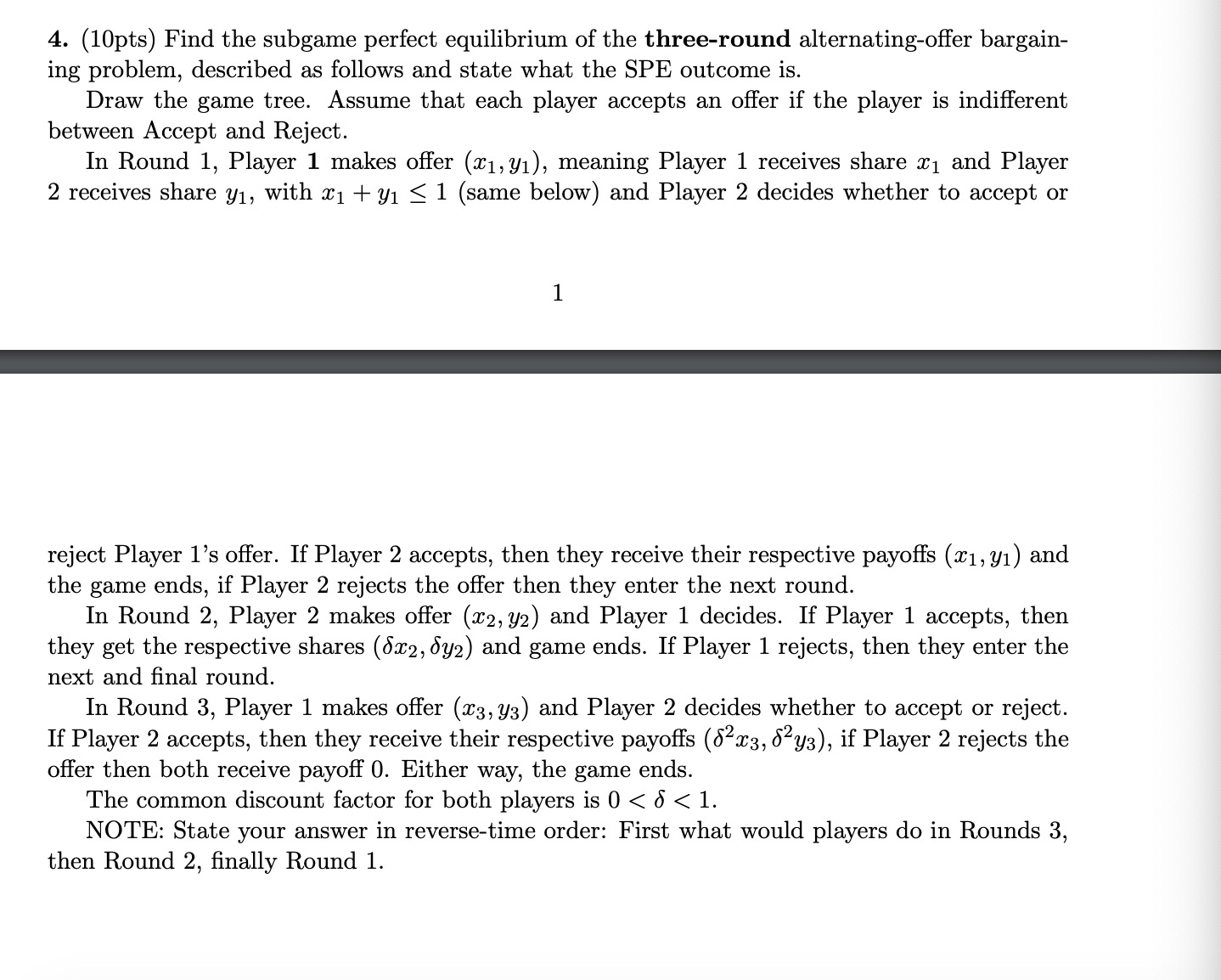Question
4. (10pts) Find the subgame perfect equilibrium of the three-round alternating-offer bargaining problem, described as follows and state what the SPE outcome is. Draw the
4. (10pts) Find the subgame perfect equilibrium of the three-round alternating-offer bargaining problem, described as follows and state what the SPE outcome is. Draw the game tree. Assume that each player accepts an offer if the player is indifferent between Accept and Reject. In Round 1, Player 1 makes offer (x1, y1), meaning Player 1 receives share x1 and Player 2 receives share y1, with x1 + y1 ? 1 (same below) and Player 2 decides whether to accept or 1 reject Player 1's offer. If Player 2 accepts, then they receive their respective payoffs (x1, y1) and the game ends, if Player 2 rejects the offer then they enter the next round. In Round 2, Player 2 makes offer (x2, y2) and Player 1 decides. If Player 1 accepts, then they get the respective shares (?x2, ?y2) and game ends. If Player 1 rejects, then they enter the next and final round. In Round 3, Player 1 makes offer (x3, y3) and Player 2 decides whether to accept or reject. If Player 2 accepts, then they receive their respective payoffs (? 2x3, ?2y3), if Player 2 rejects the offer then both receive payoff 0. Either way, the game ends. The common discount factor for both players is 0

Step by Step Solution
There are 3 Steps involved in it
Step: 1

Get Instant Access to Expert-Tailored Solutions
See step-by-step solutions with expert insights and AI powered tools for academic success
Step: 2

Step: 3

Ace Your Homework with AI
Get the answers you need in no time with our AI-driven, step-by-step assistance
Get Started


